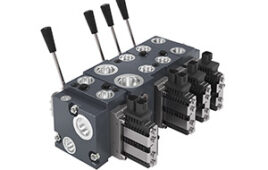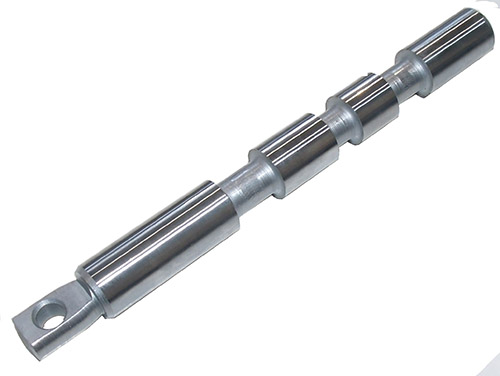NCAT seeks to improve human element in fluid power
Unlike other members of the Center for Compact and Efficient Fluid Power, North Carolina A&T State University does not work on improving fluid power technology; instead the mainly graduate level program focuses on the interaction between the technology and its human user.
NCAT is involved with a CCEFP project focused around human performance modeling and user-centered design. The goal of this project is to develop a model that can be used to better understand the simultaneous cognitive and physical interactions that occur when operating complex fluid power systems. This model would then be used to design human-machine interfaces that are safer, easier to understand and more comfortable for the user.
Unlike traditional modeling techniques that look at the physical and cognitive abilities of the user independently from one another, NCAT’s model takes into account several factors that link these abilities together. Factors such as stress level, workload and fatigue can all affect the user’s judgment and decision-making abilities.
“We argue that those two aspects should be looked into at the same time,” Steven Jiang, a professor at North Carolina A&T State University said. “Because one could affect the other, some part of the physical aspect could affect your cognitive performance and vice versa.”
Participant conducts a usability experiment using haptic controlled excavator.
Special software was used to bring these two human aspects into a single model. One of the programs was a human model simulator called JACK. This model allows various human characteristics, such as gender, height and weight, to be taken into account during the design process. Researchers also used a program called MicroSaint, which provides cognitive performance models. These two models are then brought together to create a single performance model that more accurately predicts human interaction with a system than could be gleaned from looking at two independent models.
The development of a user-centered interface for complex fluid power systems could lead to reduced costs for the industry. Interfaces designed to better work with the user can reduce the time it takes to train someone to use the system. Shorter training periods mean companies don’t need to spend as much money on training. Taking the user into consideration in the earliest stages of system development could also save money by reducing the number of costly prototypes needed to finalize the design.
“If you spend more time and effort in the design stage, make sure the user’s going to be very comfortable and have an easy time interacting with the system, it can save you money in the long term even though initially you might need to invest more money,” Jiang said.
The work that NCAT has done in the way of user-centered interfaces has also extended into the realm of robotics. In a previous CCEFP test bed, researchers worked closely with Georgia Tech and Vanderbilt University to design a rescue robot supported by fluid power. In this test bed, NCAT sought to improve the robot’s user interface by including a haptic system into the types of feedback the user can receive from the system. This additional feedback device gives the user more information about the environment and helps improve the amount of trust the user has in the system. The more trust the user has, the less likely they will be to hesitate or second-guess themselves in the field.
North Carolina A&T State University
www.ncat.edu
Filed Under: Mobile Hydraulic Tips




